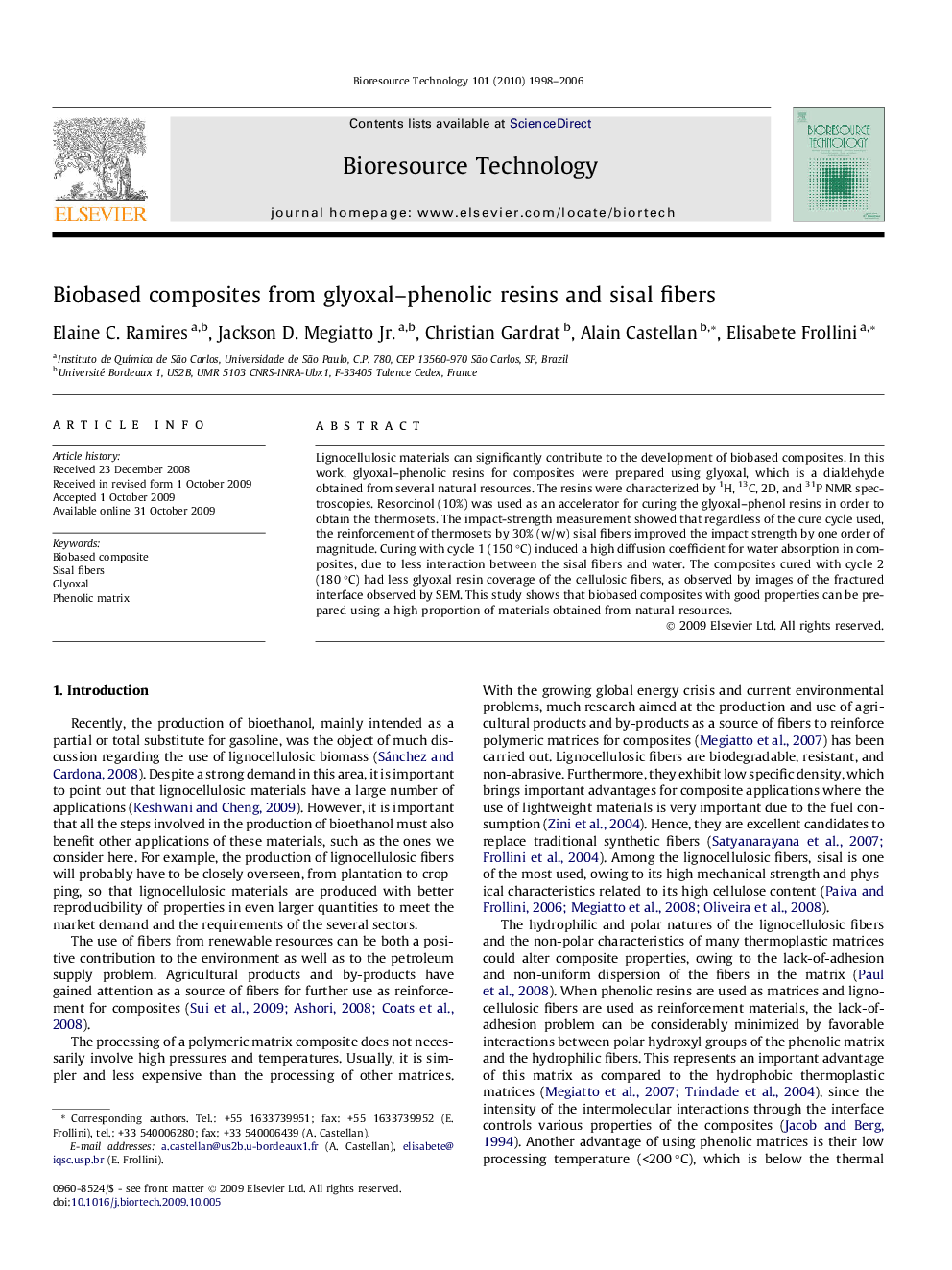| Article ID | Journal | Published Year | Pages | File Type |
|---|---|---|---|---|
| 682786 | Bioresource Technology | 2006 | 9 Pages |
Lignocellulosic materials can significantly contribute to the development of biobased composites. In this work, glyoxal–phenolic resins for composites were prepared using glyoxal, which is a dialdehyde obtained from several natural resources. The resins were characterized by 1H, 13C, 2D, and 31P NMR spectroscopies. Resorcinol (10%) was used as an accelerator for curing the glyoxal–phenol resins in order to obtain the thermosets. The impact-strength measurement showed that regardless of the cure cycle used, the reinforcement of thermosets by 30% (w/w) sisal fibers improved the impact strength by one order of magnitude. Curing with cycle 1 (150 °C) induced a high diffusion coefficient for water absorption in composites, due to less interaction between the sisal fibers and water. The composites cured with cycle 2 (180 °C) had less glyoxal resin coverage of the cellulosic fibers, as observed by images of the fractured interface observed by SEM. This study shows that biobased composites with good properties can be prepared using a high proportion of materials obtained from natural resources.
